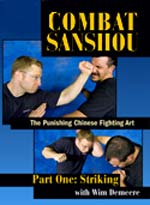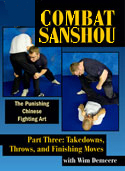|
In This Hub:
Angles Conflict in Training DT: A Critical Review Distance Effective Movement Force Gun Retention Muscle Mushy Movement Pain And Submission Patching Power SD/DT/MA Training Unnecessary Movement Why Takedowns Go Wrong Yellow Tinted Back-Up LEO/Corrections Hub Martial Arts Hub Psychological Survival Hub Self-Defense Hub NNSD Home Page
Marc MacYoung? |
him, on the floor, unconscious for trying to get my gun. Marc MacYoung
On this page: In my opinion the current attitude about gun retention is rather "schitzo". Meaning it is insanely contradictory, and therefore utterly dysfunctional. That is because while it is a life-threatening concern for officers on the street, what is commonly taught is a response on the level of "control tactics." That is to say it is more relevant to controlling a combative drunk than officer survival. This sad state of affairs is probably not intentional, however it is the result of focusing on the wrong issues when someone attempts to seize your gun. Two Boxes The first box is attempting to control and detain a resisting suspect. The second is when you are fighting for your life. Which box you are in can shift in the blink of an eye. But if you can't shift equally fast you are in deep, deep trouble. In my personal, less than PC and departmentally correct attitude, is simple: Go for my gun and a perp has moved it into the second box. And that means what I am going to do will be far more intense. The duration of that intensity will be until that person no longer poses a threat. Or, in the case of someone grabbing for my gun, he lacks the ability to do so again. In otherwords, I am not going to drop a rock on his head, I am going to drop a mountain on him. This to make sure he is *not* going to get my gun, nor offer any other kind of further resistance. By going for my gun, the kid gloves have come off. He is not only going to be put down, but he is not going to get another chance to take it back to that place. The response that protects your gun, will in all probability, *not* be lethal -- but he won't be getting up and dancing anytime soon. In fact, the perp will have to be taken to the hospital, both to protect yourself and as a matter of departmental policy. Believe it or not, one response of this magnitude often ends the conflict right there...removing the need for further use of force. Basically, after you drop a bomb on someone's head, you don't need to do much else -- except clean up. Besides, it's easier to cuff someone when he unconscious or laying on the ground, stunned. When it comes to gun retention, what I teach is similar to the brutally effective hand-to-hand tactics that I teach to the military. The object is no longer to control your opponent, but to neutralize him. Sweep 1) You must shield
your gun from his grasp The fastest and most effective way to shield your gun is a sweeping action we call "Wipe your pants." This action is not unlike wiping the back of your hand on your pants. The following photos are not to show you the hand position, but instead an over-exaggerated example of the path your arm follows while wiping.
When done hard and fast this strike deflect the perp's hand away from your gun. This is the fastest and easiest way to stop that particular grab. However,
that is not enough. As you are doing this you
must step forward. Not straight forward but past his
shoulder. We describe this as "dancing cheek to
As you are doing this, bring your hand up to control his head any manner you. From there you proceed to apply the elements spoken about on the Angles page. From this point, the person is going to hit the ground ..hard. Being as he just tried to grab your gun, depending on departmental policy, an elbow to assist him on his downward journey might not be out of line. Just so you know, the titles on this page, contain some of the fastest ways to twist and render a gun grabber incapable of continuing to fight.
|

|
||||||
|
||||||||

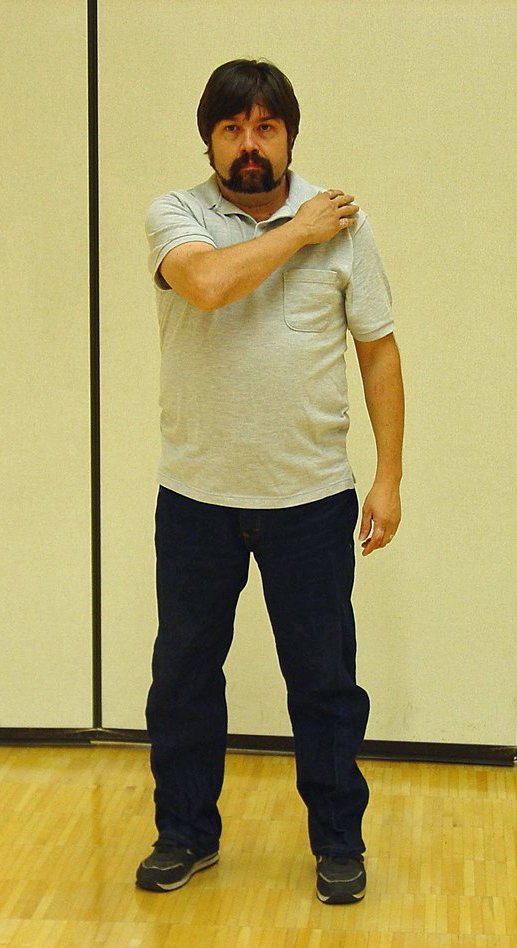
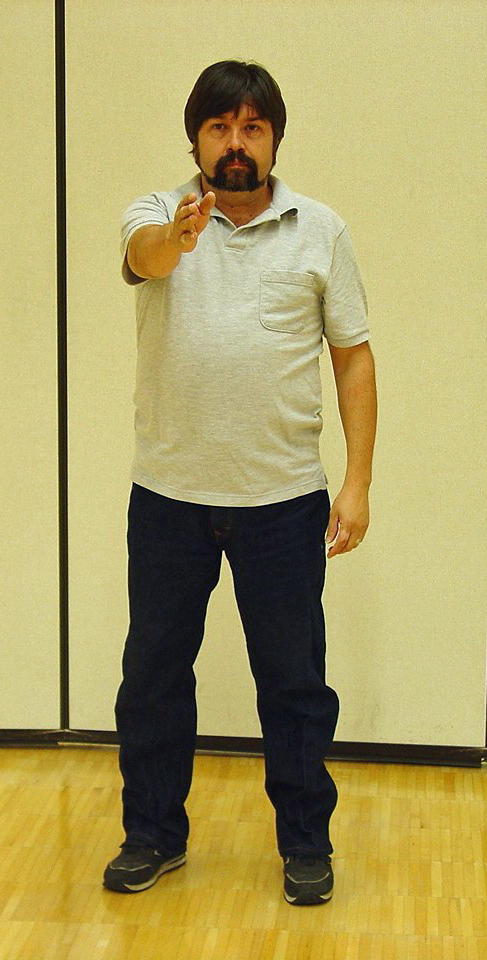
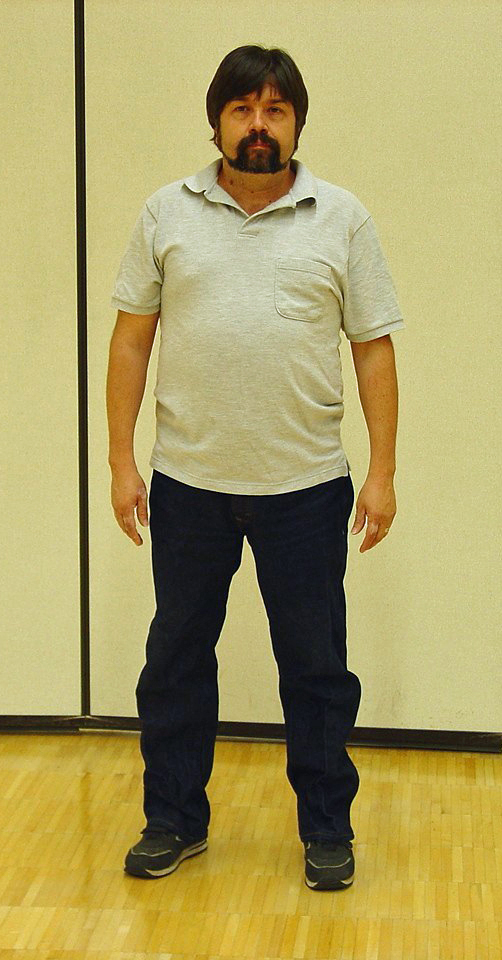

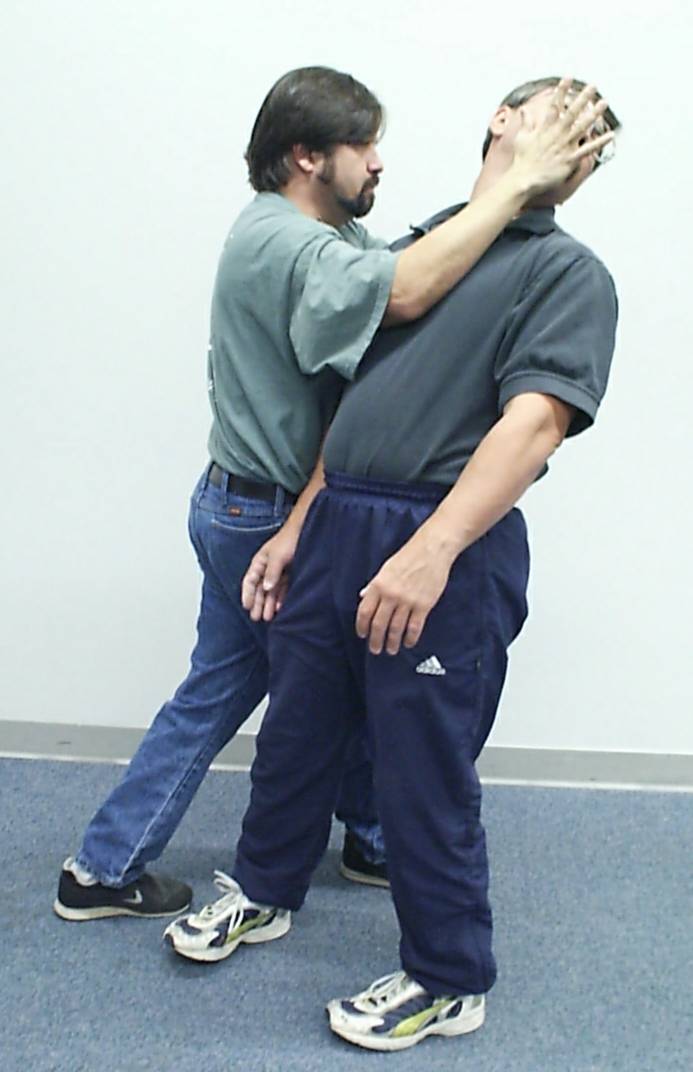 cheek" to civilians. To officers we refer to it as
shoving your gun up a certain orifice because your gun
is now buried into his butt cheek. This takes your gun
out of his reach.
cheek" to civilians. To officers we refer to it as
shoving your gun up a certain orifice because your gun
is now buried into his butt cheek. This takes your gun
out of his reach.




